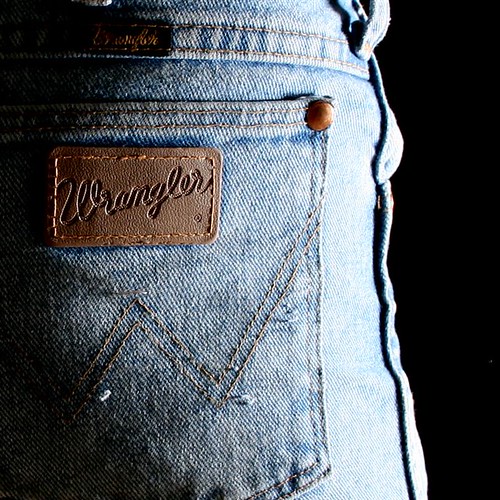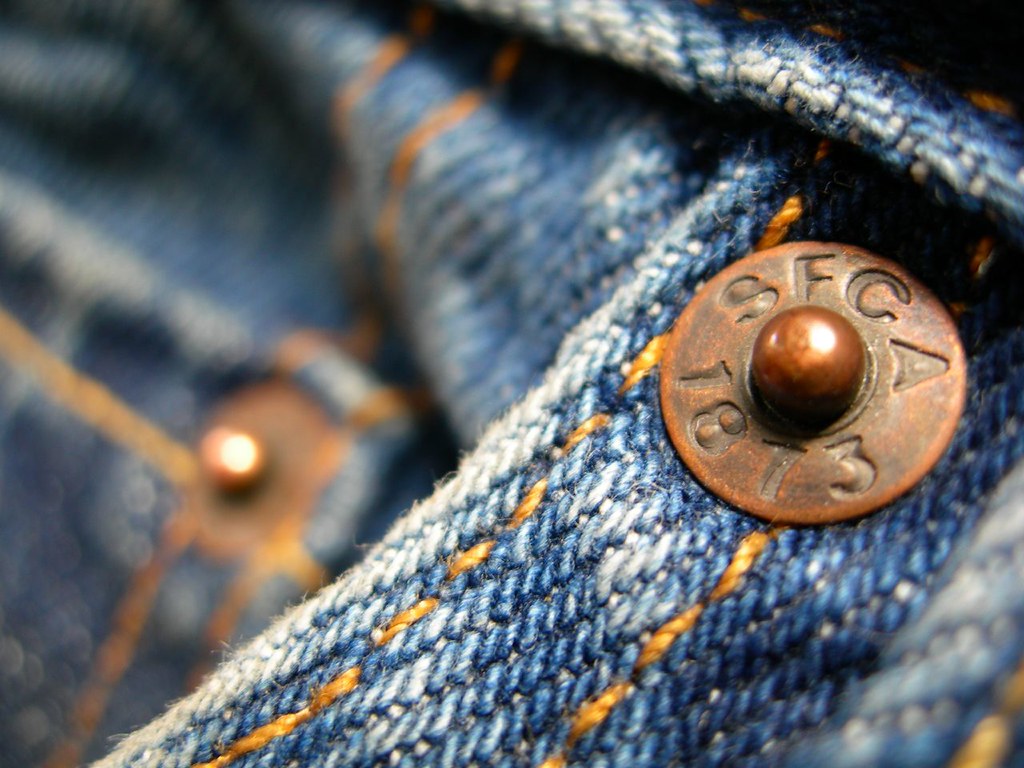Denim Through Prisms
An intersectional study of the history of denim in America, the making process, and denim’s impact on the fashion industry
Materiality & Maker
How denim trumped canvas
Classic. American. Vintage. Levi’s. Lee. Wrangler. These words surely ring a bell, but when did jeans come into existence? Why? Though some might be surprised it wasn’t the “cheeky” cuts or varying washes that made the blue jean popular, but their practicality that sold. Existing outside the realm of fashion, jeans were made for those who worked in harsh conditions to scrape by. Worn by coal miners and laborers, jeans were practical not only for their thick unwieldy fabric, but because of the way they were put together. Unlike canvas pants, the materiality combined with the bolted seams withstood rips and damage, allowing workers to wear them longer and in tougher conditions. Previously, “teamsters, surveyors, and minors had long complained that their garments came apart” prompting for a new model of pants (Cray 18). Yet material alone did not cut it, leading to the invention of riveted jeans. Though we credit Levi Strauss for the riveted pockets, it was actually the idea of one of his tailors, who could not afford to manufacture and patent the product, turning to the help and cash of Levi to put it in motion. With the help of Levi Strauss and Co. the riveted five pocket jeans would become the standard, patented so that no other company could copy the model (Cray 18). At this point, no other clothing manufacturers had turned to rivets, leading to Levi’s success within the industry. Practical, durable, and anything but fashionable the five pocket jean became a symbol of the working class and an industrialized America.



The Rise of Denim in Workwear
Fig 1. Top right. Close up image of Wrangler Denim. Wrangler continued with using rivets, but advertised more to rodeo stars and western wear enthusiasts. Known for the stitched “W” on the back pockets, Wrangler made its mark in denim. Image sourced from WordPress creative commons. Titled “Wrangler” by Cayusa.
Fig 2. Bottom right. This image shows denim held together by rivets. The new design allowed for more strain on the fabric which was ideal for laborers working in tough conditions. Image was sourced from WordPress creative commons. Work is titled “Rivets” by flickrohit.
Fig 3. Bottom left. Painted wall advertising Levi Strauss & Co’s waist overalls. The phrase “a new pair free if they rip” emphasizes the strength of using denim fabric over canvas. Image sourced WordPress creative commons.
Denim Represented in art
Thomas Hart Benton’s America Today
1930-31, Egg tempera with oil glazing over Permalba on a gesso ground on linen mounted to wood panels with honeycomb interior.

Thomas Hart Benton’s mural America Today paints an iconic picture of the history of blue jeans and their connection to the American working class or “blue-collar” laborers. Burly and strong, the laborers in the mural sport nothing less than blue jeans, as they work towards industrialization, with smokestacks and skyscrapers filling up the background around them. This mentality of Americans pulling themselves up by their bootstraps pairs itself perfectly with blue jeans in this extensive multi-paneled mural. Created in the 1930’s, this artwork reflects the mood of a nation, connecting ideas and themes of work and labor with success and rebuilding (Griffey). In this sense, blue jeans are painted into the canvas not as a fashion statement, but rather a social statement about strength and the perseverance of the United States. Though this painting represents fictional characters in a depiction of industrialization, it illuminates the mood of a nation, and how laborers most likely dressed during this time. The materiality of the piece itself is also striking, as the mural uses a plethora of different substances and is grounded on linen, a fibrous textile.
Fig 4. Thomas Hart Benton’s America Today. Metropolitan Museum of Art, New York City. Image sourced from Art Resource.
A Look Inside Textile mills
Cone Mills in Greensboro, North Carolina
Unlike today, denim was American made, using domestic factories and sourcing. Established in 1891, Cone Mills in Greensboro, North Carolina made a mark on the indigo textile world, as a denim source for companies like Wrangler, Levi, and Lee (Abrego). As part of a network of textile plants, White Oak, owned by Cone Mills Corporation reacted to shifts and changes in denim production and wear. The plant specialized in using shuttle looms in order to weave the indigo textiles and “weathered the transformation of jeans being exclusively work clothing for predominantly male manual laborers on the jobsite to everyday casual wear in the later half of the twentieth century” (Abrego, 517).
Background image courtesy of WordPress creative commons. Image is in the public domain and sourced from UNC libraries. Image depicts overhead view of Cone Mills Denim Factory.
Mill Villages: a story of inequality
Yet, this romanticized version of industrialization excludes a deeper look into textile factories, many of which were occupied under racist regimes in the Jim Crow South. These laws were put into place “to prevent movement of black laborers and increases in their wages” (Roback 1161). Even after Jim Crow was abolished, up until the 1970’s and 80’s people of color struggled to obtain jobs above textile laborers, or the most gruesome, laborious, and taxing jobs in the factory. Additionally, they were paid less than white workers, and found themselves stuck in these roles, unable to obtain skilled positions. An element that made textile mills in the South fall into racist and harmful modes of operation was the fact that many white workers felt like they had to compete against people of color for jobs. After the depression, “the labor market of this time period [was] essentially competitive” which resulted in the exploitation of black people (Roback 1162). Because of mills paternalistic modes of operation, mill communities sprung up, further distancing whites from blacks, and further pushing against equality in the workplace. Within these mill villages, “white workers were given access to room, board, and a number of amenities” (Musquiz). They spatially and socially boxed themselves out from interacting with people of color, living within the confines of the mill villages, separating themselves from the changing world around them. Even after Jim Crow laws were abolished, racism and harmful modes of thinking and operating did not just dissipate. Black people, especially black women, struggled to possess higher level jobs in mills, up until the late 70’s and 80’s. In the case of Lea v. Cone Mills in 1969, it was charged that the Eno plant of the Cones Mills Cooperation was using unlawful hiring techniques, and hiring based on race and gender. This case not only dealt with race, as the plaintiffs were black, but also dealt with the dual complexity of gender, as the three plaintiffs were also all women. Facing dual oppressions, or as Kimberlé Crinshaw coined an intersection of oppressions, Shirley Lea, Romona Pinnix, and Annie Tinnin all filed the suit against Cone Mills after they faced unlawful hiring practices. The court stated that the hiring practices of the Eno plant “constitute a pattern and practice of discrimination within the meaning of Title VII of the Civil Rights Act of 1964” (Lea v. Cone Mills). After the long fought battles to obtain these positions, mills started closing and companies started outsourcing internationally, resulting in stateside mills losing jobs and brands. There was no longer the need for these mills, considering companies could go around national labor laws by sourcing internationally. Sadly, when justice was finally met, it didn’t matter anymore. The jobs were gone, mills closed, and denim was now being sourced in cheaper, more corrupt ways. This leads to the dichotomy that is denim. We often find ourselves on the hunt for vintage Levi’s and Wranglers made from the same mills where women and people of color were discriminated against, shoved into the worst jobs possible, and when they finally did obtain freedoms and rights, it was all over. On the other hand, most of the denim bought today is made by the tired hands of sweatshop workers, living on unfair wages and working in horrifying spaces. This leads us to question what “heritage” denim even means, and what American ideals and customs we are romanticizing.